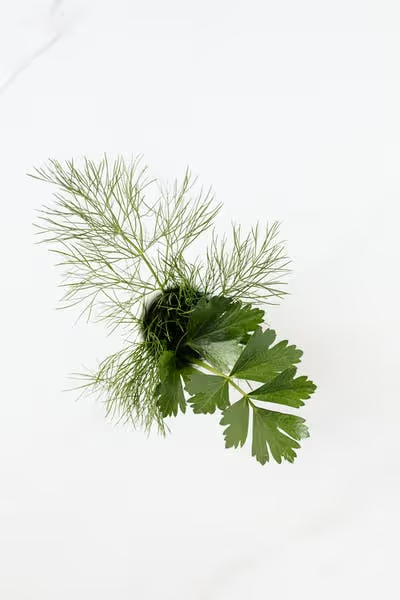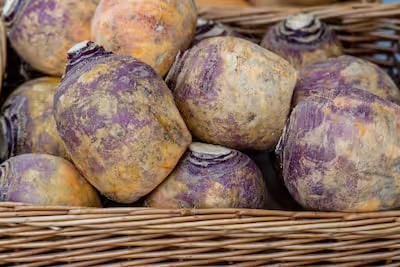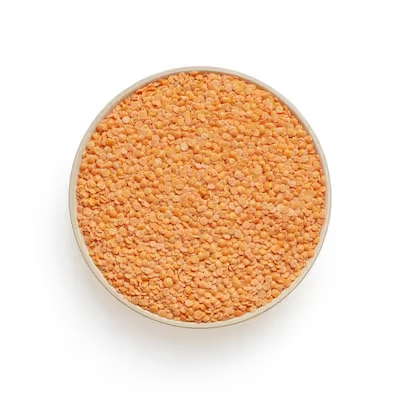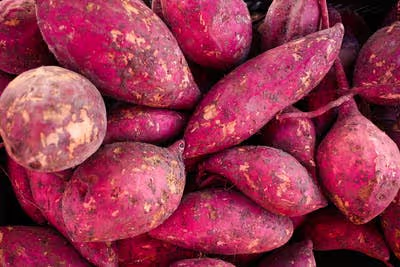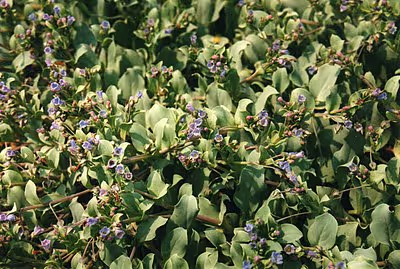Growing Burmese Grape at Home: A Simple Step-by-Step Guide

Growing Burmese Grape
Growing Burmese grape at home starts with choosing sunlit, well-draining soil to plant your seedlings. To thrive, these fruit-bearing beauties require regular watering and organic fertilizer. Follow these straightforward steps, and you'll soon savor the sweet-tart reward of your own Baccaurea ramiflora—a taste of tropical adventure waiting right in your backyard.
Cheatsheet: Home Burmese Grape Made Easy
🌱 Location & Light
Pick full sun or part shade. Needs warmth—70–95°F (21–35°C).
🛠️ Tools and Products You'll Need
- Burmese grape seeds or seedlings
- Compost-rich soil
- Mulch
- Watering can or hose
- Pruning shears
- Organic fertilizer
- Trellis (for support, optional)
- pH meter (soil 5.5–6.5 ideal)
🧑🌾 Step-by-Step Planting
- Soak seeds overnight. For seedlings, skip.
- Dig hole 2 ft (60 cm) deep, twice root ball width.
- Mix compost into soil. Check pH.
- Plant, cover roots, water deeply.
- Mulch around base, avoid stem contact.
- Space trees 15 ft (4.5 m) apart.
💧 Watering & Feeding
Water weekly, more in dry spells. Apply organic fertilizer every 2–3 months.
✂️ Pruning & Care
Prune yearly for size, airflow, and shape. Remove weak branches.
🌼 Fruiting & Harvest
Expect fruit in 2–4 years. Harvest when clusters turn yellow-red; high in Vitamin C and antioxidants.
🧺 Storage & Use
Eat fresh, juice, or jam. Store at 50–60°F (10–16°C) for up to 7 days.
🥗 Self-Sufficiency & Health
One tree yields up to 50 lbs (23 kg) fruit yearly—boosts nutrition and food security.
-
Growing Burmese Grape at Home: A Simple Step-by-Step Guide
I grow Baccaurea ramiflora for the same reason I plant jaboticabas and black sapotes: tree-ripened fruit with a story and a swagger. Burmese grape is cauliflorous, which means it flowers and fruits along the trunk and big limbs like living chandeliers.
Know the plant before you plant
Dioecious means separate male and female trees, and that shapes everything from sourcing to spacing. Seedlings won’t reveal their sex for years, so plan ahead for pollination.
This species likes heat, humidity, and bright light, and it sulks in wind and cold. It thrives outdoors in USDA zones 10 to 12, or in a greenhouse further north.
“Burmese grape is dioecious: one plant produces only male or only female flowers.” (Taxonomy and distribution referenced by Royal Botanic Gardens, Kew, Plants of the World Online)
Quick facts for growers
- Botany: Baccaurea ramiflora Lour., family Phyllanthaceae, cauliflorous, evergreen.
- Climate: Warm, humid tropics, ideal range 68 to 95 F (20 to 35 C).
- Cold: Tissue damage likely below 35 F (1.5 C); lethal frost near 32 F (0 C).
- Soil: Well drained loam, pH 5.5 to 6.5, high organic matter.
- Light: Full sun for fruiting, light afternoon shade in hot inland sites.
- Water: Even moisture, no standing water.
- Pollination: Insect pollinated, plant both sexes or a grafted female with access to pollen.
- Time to fruit: Grafted plants 2 to 3 years; seedlings 4 to 7 years in warm climates.
Step-by-step: Growing Burmese Grape
- Choose your stock: buy a grafted female and a male pollinizer, or a known female plus a male scion for topworking later. Seed is fine for experimentation, but fruiting gets delayed and sex is a coin toss.
- Site it right: pick a wind-sheltered, south-facing spot with 6 to 8 hours of sun. Space trees 20 to 26 feet apart (6 to 8 m) so canopies breathe.
- Soil prep: loosen the planting area 3 feet wide (1 m) and mix in 2 to 3 inches (5 to 8 cm) of compost. Aim for a bed that drains within 24 hours after heavy rain.
- Planting: set the root flare at grade, backfill gently, then water to settle. Mulch 3 to 4 inches (8 to 10 cm) deep, pulled 3 inches (8 cm) away from the trunk.
- Watering rhythm: keep soil evenly moist the first dry season, roughly 1 to 1.5 inches (25 to 38 mm) of water per week. In containers, irrigate when top 1 inch (2.5 cm) dries.
- Feeding: apply a tropical fruit fertilizer like 8-3-9 with micronutrients at 0.25 lb (110 g) per foot of canopy diameter quarterly, scaling with growth. Foliar trace sprays help in high pH water zones.
- Canopy training: stake a central leader to 30 inches (75 cm), then select 3 to 4 scaffold branches around the trunk. Keep the interior airy to reduce anthracnose.
- Pollination plan: if you only have a female, graft a male twig on a high limb or park a potted male nearby during bloom. Small flies and bees do the rest.
- Cold and wind protection: wrap young trunks with breathable tree guards and use frost cloth below 35 F (1.5 C). Windbreaks or shade cloth make leaves last through hot, dry winds.
- Harvest: pick clusters when the skin turns straw-gold to blush-pink and softens slightly. The pulp pulls cleanly from the seed and tastes sweet-tart with tropical musk.
Container culture that actually works
I keep a pair in 25 to 30 gallon tubs (95 to 115 L) under high-output LEDs in winter at 60 to 70 F (16 to 21 C). Growth slows, fruiting waits for summer heat, and that’s fine.
Use a chunky mix: 40 percent high quality compost, 40 percent pine bark fines, 20 percent perlite, with slow-release fertilizer and monthly liquid seaweed. Repot every 2 to 3 years to refresh air space around roots.
Propagation, straight talk
Seeds are recalcitrant and lose viability fast, so sow fresh within a week in warm media at 77 to 86 F (25 to 30 C). Air-layering and cleft grafts take well on pencil-thick wood at spring flush.
I graft male onto female branches at about 3 to 4 feet high (0.9 to 1.2 m) to save space. Keep grafts shaded and humid for two weeks, then harden off.
Pruning and shaping for fruit on the trunk
Because it fruits on older wood, avoid hard cuts on the main trunk. I thin twigs after harvest, remove crossing shoots, and keep leaders sunlit.
A clean trunk 18 to 24 inches high (45 to 60 cm) encourages pretty fruiting clusters you can actually pick. Sanitize tools with 70 percent alcohol between trees.
Pests, diseases, and simple IPM
Scale and mealybugs hide in leaf axils; brush them off and release predatory lady beetles if needed. A light horticultural oil spray in the cool of evening helps, but skip during bloom.
Fruit flies target ripening clusters outdoors in warm regions. Bag clusters with fine mesh, deploy protein bait stations with spinosad, and harvest promptly.
Anthracnose shows up as leaf and fruit spots in wet spells. Improve airflow, prune out infected tips, and rotate copper and biofungicides as labeled.
Fruiting expectations and yield
Grafted trees can set a light crop by year 2 or 3 with good heat. Seedlings take patience, and they pay you back only after a few summers of strong growth.
“In humid tropical orchards, mature Burmese grape can carry dense clusters directly on trunks and scaffold limbs.” (Field notes and extension summaries referenced by regional horticulture bulletins and CABI datasheets)
Flavor, kitchen, and storage
The pulp lands between lychee and mangosteen with a citrus snap, which makes a wicked shrub or a quick jam. Fruit keeps 3 to 5 days refrigerated at 41 F (5 C), so eat or process fast.
Buying guide: plants, price ranges, and what to ask
For reliable fruit, prioritize a labeled female on a vigorous rootstock and secure a male plant or scion. Ask the nursery if the mother tree fruited well and if the scion came from known female wood.
In my experience, seedlings run 15 to 40 USD, while grafted stock lands 40 to 90 USD depending on size and source. Check specialty tropical fruit nurseries, rare fruit society plant sales, and reputable international seed vendors with fresh stock.
- Ask for phytosanitary documentation on imported material where required.
- Request media type, rootstock, and age from potting date, not from strike date.
- Inspect for scale, mealybugs, and root health before parting with cash.
Soil chemistry and irrigation tips that save seasons
These trees hate wet feet, so raise beds 6 to 8 inches (15 to 20 cm) in heavy clay. If irrigation water runs alkaline, acidify to pH 6.0 with citric acid injectors or collect rainwater.
Mulch living with peanuts or sunn hemp in the off-season to feed soil biology. I side-dress with composted manure at 1 inch (2.5 cm) depth at spring flush.
Greenhouse and cool-climate strategy
Set day/night targets around 80/65 F (27/18 C) during active growth and hold relative humidity near 60 percent to limit fungal issues. Provide 12 to 14 hours of light in winter at 200 to 400 µmol m⁻² s⁻¹ PPFD for maintenance.
Shake branches gently at bloom if insect activity is low, and keep fans moving air across the canopy. Avoid overhead watering during flowering to protect pollen.
Comparable fruits if you like this vibe
- Rambai (Baccaurea motleyana): similar cauliflorous clusters, sweeter and less tart, even fussier about warmth.
- Tampoi (Baccaurea macrocarpa): thicker rind, deep orange pulp, big tree for true tropics.
- Jaboticaba (Plinia spp.): cauliflory with grape-like fruit, better for marginal subtropics and containers.
- Bignay (Antidesma bunius): hedge-friendly, tolerant, great for wine and jam with a similar sweet-acid balance.
Common mistakes I still see
- Planting one unlabeled seedling and expecting fruit soon.
- Overwatering compacted clay and blaming the leaves for yellowing.
- Heavy pruning of the trunk that removes future fruiting sites.
- Underfeeding in containers after year two, then wondering why growth stalls.
Credible references I trust for Growing Burmese Grape
Royal Botanic Gardens, Kew, Plants of the World Online for taxonomy and native range. CABI Horticultural and Forestry Compendia for ecology, propagation, and orchard practices.
Regional university extension publications from Southeast Asia on Baccaurea cultivation and postharvest handling. Classic tropical fruit texts and rare fruit society proceedings for grower-level techniques and performance notes.
My field notes for fast wins
A two-tree setup beats guessing: one grafted female, one male seedling pruned small but present at bloom. Keep trunks in dappled light early on to prevent sunscald, then open to full sun as bark matures.
Bag the first real crop, eat half fresh, and reduce irrigation slightly a week before harvest to tighten flavor. That’s how Growing Burmese Grape goes from curiosity to habit.
Frequently Asked Questions About Growing Burmese Grape
What's the Ideal Soil for Planting Burmese Grape?
Burmese Grape prefers a slightly acidic, loamy soil that freely drains yet retains a whisper of moisture. Infuse your planting medium with ample organic matter—compost or aged manure—to nourish the roots and coax vigorous growth.
How Often Should Burmese Grape Trees Be Watered?
During initial growth phases, your Burmese Grape saplings lust for regular hydration. Water deeply once or twice weekly, allowing the topsoil to dry slightly between sessions. Mature trees sip less frequently, thriving with a solid soak every couple of weeks.
Do Burmese Grape Trees Require Full Sun or Shade?
Plant your Burmese Grape trees in locations kissed generously by sunlight. Partial shade is tolerated, but abundant sun exposure provokes lush foliage and dense clusters of fruit.
When Can I Expect Fruit Production After Planting?
Patience pays off here—typically, your Burmese Grape tree unfolds its first fruits around 4 to 5 years from planting. The wait rewards you richly, as the tree becomes increasingly productive with maturity.
How Should I Prune and Maintain Burmese Grape Trees?
Pruning invigorates the Burmese Grape; slice away weak or crossing branches to channel energy into vigorous growth. Annual pruning after the harvesting period maintains an open canopy, promotes air circulation, and amplifies next year's bounty.
Are There Common Pests or Diseases Affecting Burmese Grapes?
Although resilient, Burmese Grapes occasionally attract aphids, scale insects, and fungal diseases. Combat pests organically with insecticidal soap or neem oil sprays, and minimize disease by ensuring good airflow and avoiding waterlogged soil.
Can Burmese Grapes Be Grown in Containers?
Burmese Grapes adapt admirably to large containers if garden space is limited. Choose pots with ample drainage holes, fill them with rich, organic soil, and commit to diligent watering and occasional repotting as the plant matures.
Growing Burmese Grape at home takes patience, good soil, and a bit of attentive care. These trees reward you with uncommon, sweet fruit and a touch of tropical beauty right in your backyard. Give them enough warmth and moisture, and they’ll offer back clusters of juicy grapes year after year. Watch for pests, prune with intention, and remember: the tree’s slow nature means each harvest is worth savoring. Few home crops match its exotic punch or steady resilience—grow it, and you’ll understand why. If you crave more unusual fruits, you might also explore growing mulberries or dragon fruit for your collection. In the end, with growing Burmese Grape, patience tastes sweet.
The Homesteader's Guide to Burmese Grape Self-Sufficiency
Multipurpose Uses for Homestead Efficiency
- Food Preservation: Ferment ripe Burmese grapes into probiotic-rich wine or vinegar to extend usability year-round.
- Medicinal Value: Utilize dried fruit skins in herbal teas for digestive health and mild anti-inflammatory benefits.
- Livestock Feed: Offer excess fruit pulp as supplemental feed for chickens and goats, providing vitamins and reducing feed costs.
Sustainable Cultivation Techniques
- Compost Integration: Mulch fallen leaves and fruit debris from trees back into soil to enrich fertility naturally.
- Rainwater Storage: Install rain barrels near Burmese grape plants; collect and reuse rainwater to minimize water usage by up to 40%.
- Intercropping: Plant nitrogen-fixing legumes such as beans or peas nearby to enhance soil nutrients and boost fruit yield.
Maximizing Harvest Efficiency
- Staggered Planting: Grow multiple Burmese grape plants at intervals of one to two months to produce continuous harvests, reducing fruit waste.
- Solar Dehydration: Dry excess grapes naturally using solar drying racks for nutrient-dense snacks without energy costs.
Community Sharing and Bartering
- Seed Exchanges: Swap Burmese grape seeds and seedlings with neighboring homesteads to promote biodiversity and community resilience.
- Homestead Market: Trade homemade grape preserves, vinegar, or seedlings at local markets or co-ops to enhance self-sufficiency and income diversification.
Find out which plants will thrive in your garden!
Answer a few fun questions and get custom plant recommendations perfect for your space. Let’s grow something amazing together!

start your season
